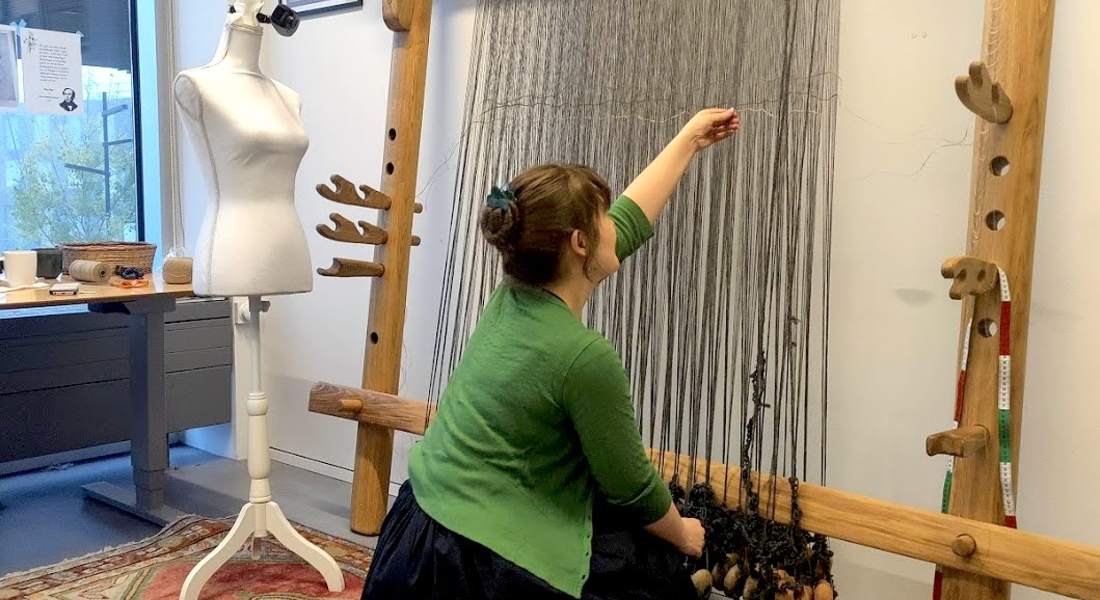Danish research institutions join the leading European network of cultural heritage
Led by researchers from the University of Copenhagen, Danish research institutions and museums now join the European Research Infrastructure for Heritage Science (E-RIHS). This will increase European collaboration in Denmark within the field of study of our cultural and natural heritage.

The study of our cultural and natural heritage has seen quantum leaps in the last years because of new technologies and methods. However, international collaboration between heritage scientists is needed in order to heighten the quality of the research and maximize the output of the research facilities.
Therefore, the European Research Infrastructure for Heritage Science (E-RIHS) was launched in 2016 in order to create cohesive collaboration between scientists and the museum and conservation industry across Europe.
Until now, Denmark has not been part of the European infrastructure. However, a new Danish node of E-RIHS will now be established in order for Denmark to join the infrastructure.
‘We are very excited that our Danish institutions will now become a part of E-RIHS. It is a great opportunity to spark greater collaboration with our European research colleagues as well as to recruit excellent researchers within heritage science to Denmark’, says Matthew Collins, Professor at the GLOBE Institute within the University of Copenhagen.
So far, a long list of institutions within academia, education, conservation and exhibition in Denmark are involved. To Matthew Collins, this strong foundation is necessary.
‘In Denmark we already have a very integrated heritage science environment with strong ties between museums, researchers and other institutions. However, this new move enables us to form closer collaborations with our European counterparts. They will get access to our highly advanced facilities and we will get access to theirs’, he says.
In Copenhagen, there has been major advances within heritage science due to state of the art novel scientific methods for the analysis of ancient and modern materials. For instance, pioneering research within genomics and paleoproteomics has rewritten the history of Denmark as well as our human family tree.
TexLab at the Centre for Textile Research
One of the institutions that will benefit from the European Research Infrastructure is the Centre for Textile Research at UCPH which is building a new hub for integrated research in cloth cultures. Among Humanity’s rich material landscape, cloth cultures form a particularly revealing class of artifacts, as textiles, leather items and furs surround people’s bodies from birth to death and convey messages about the individual’s social status, community belonging and identity. As such, they have long been recognised as a powerful medium to study social behaviours, particularly helpful to help decode past societies.
- Today, scientific methods, new imaging techniques, and advanced recording systems can bring new perspectives to long-lasting questions about archaeological finds, such as What is it made of? Where does it come from? How was it made? Through the lens of natural sciences, ancient garments reflect the incredible diversity of natural resources used by past populations and their deep knowledge of their environment. Fragments of animal skins or fur, of silk or wool textiles, of linen yarn or tree bark cloth, reveal past eco-systems, trading networks, and intertwined cultural identities. However, while scientific methods and their new discoveries are essential to deepen our understanding, they cannot remain our only approach to investigate the complex social processes of the past. To fully tap into the potential of cloth cultures, it is necessary to merge scientific results with interpretations made in the Humanities, says Eva Andersson Strand, who is head of the Centre for Textile Research. She adds:
- With a strong foundation in both disciplines, the CTR TexLab is an interdisciplinary hub for the study of past cloth cultures, part of the new research infrastructure E-RIHS.dk. Housed in a textile lab with experimental archaeology and imagery set-ups, TexLab rests on the combined expertise of 18 researchers from UCPH, KaDK, DTU, National Museum Denmark, and Museum of Copenhagen, who develop in collaboration research projects and teaching curriculum.
Access to particle accelerators and synchrotrons
Over the next five years E-RIHS.dk intends to build upon the collaboration between museums, conservators, archaeologists and research scientists, bringing relevant and excellent innovations to the study and conservation of Danish cultural heritage.
The E-RIHS infrastructure has four main platform services and the Danish laboratories and research platforms will be built into the E-RIHS network:
- ARCHLAB (archives): Access to specialized knowledge and organized scientific information – including technical images, analytical data and conservation documentation.
- DIGILAB (virtual facilities): Virtual access to scientific data concerning tangible heritage, making them FAIR (Findable-Accessible-Interoperable-Reusable).
- FIXLAB (fixed facilities): Access to large‐scale and medium-scale facilities (particle accelerators and synchrotrons, neutron sources; non-transportable analytical instruments) offering a unique expertise to users in the heritage field, for sophisticated scientific investigations on samples or whole objects.
- MOLAB (mobile facilities): Access to an impressive array of advanced mobile analytical instrumentation for non‐invasive measurements on valuable or immovable objects, archaeological sites and historical monuments.
So far the following institutions are involved in the future E-RIHS.dk:
- The GLOBE Institute, University of Copenhagen
- Centre of Textile Research, The Saxo Institute, University of Copenhagen
- Geological Survey of Denmark and Greenland (GEUS)
- Institute of Conservation, The Royal Danish Academy
